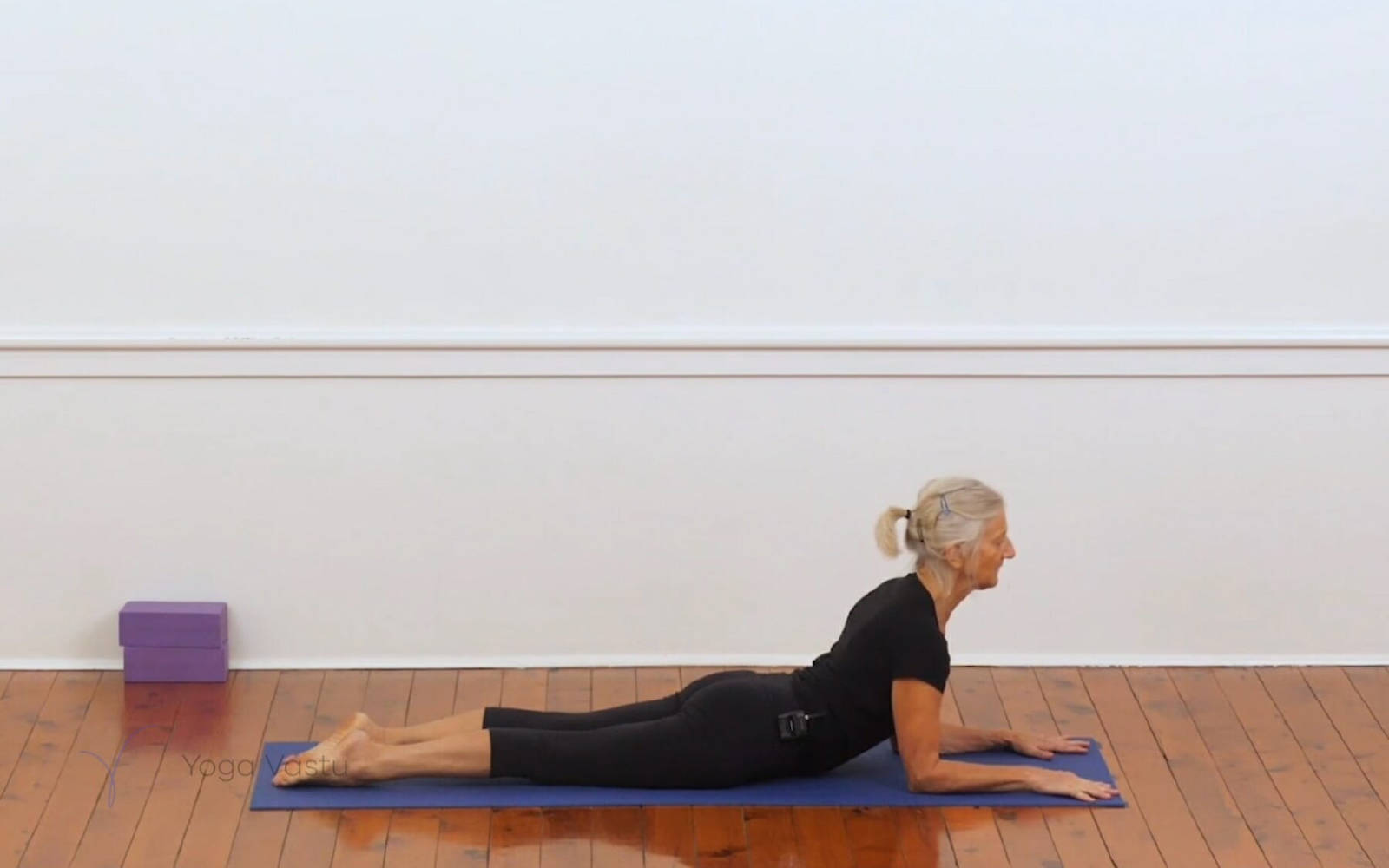How to perform Sphinx Pose
Lie down on your belly. Place your elbows right beneath your shoulders and lift your chest up off the ground. Activate your legs and point your toes back.
What is Salamba Bhujangasana?
One of the “baby backbends”, this pose is suitable for students of all levels. It is very similar to Bhujangasana (Cobra Pose), the main difference being the area of focus: while Cobra Pose focuses on the thoracic and lumbar areas of the spine, Sphinx Pose is mostly aimed at opening up the thoracic spine and shoulders, while letting your lumbar spine relax and release downward.
It is great for activating your back muscles, opening up your chest and lungs, stretching the abdomen, and promoting a general sense of well-being and peace.
As you get more comfortable with this pose try to use your arms as leverage to push you further up into a deeper backbend.
When to use Salamba Bhujangasana?
Salamba Bhujangasana is known to help the practitioner get rid of tension in the lower back and to restore the equilibrium in the spine after strenuous forward bends. Due to its restorative properties, this pose comes well closer to the end of the sequence, or after endurance-building poses, such as Chaturanga Dandasana or Phalankasana (Plank Pose).
After holding these back-strengthening poses for a prolonged period of time, lowering down into this mild backbend will give you an instant sense of relief and a sense of restored energy.

